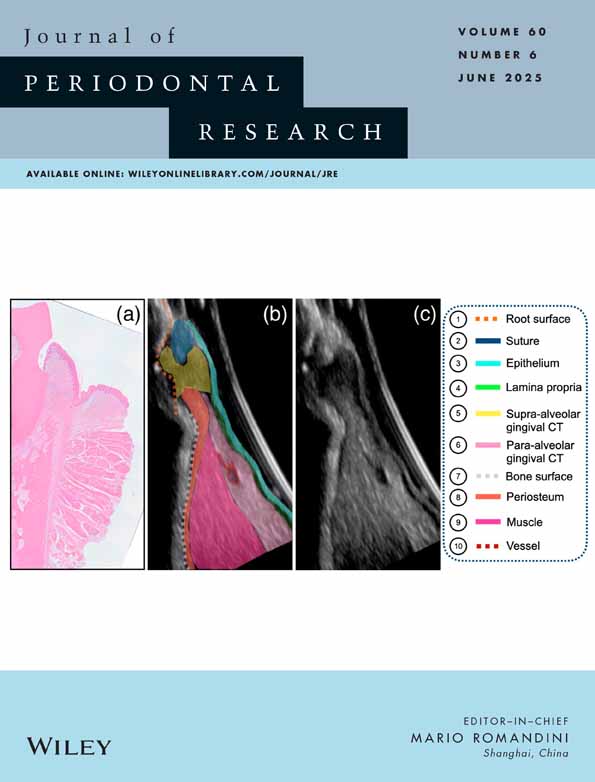Enhanced expression of vascular endothelial growth factor by periodontal pathogens in gingival fibroblasts
Abstract
Vascular endothelial growth factor (VEGF) has recently attracted attention as a potent inducer of vascular permeability and angiogenesis. Aberrant angiogenesis is often associated with lesion formation in chronic periodontitis. The aim of the present study was to investigate the properties of VEGF expression in human gingival fibroblasts (HGF) culture. HGF were stimulated with lipopolysaccharide (LPS), vesicle (Ve) and outer membrane protein (OMP) from Actinobacillus actinomycetemcomitans and Porphyromonas gingivalis. HGF constitutively produced VEGF and levels were significantly enhanced (P < 0.01) by stimulation with Ve and OMP from A. actinomycetemcomitans and P. gingivalis at concentrations of 10 µg/ml or higher. On the other hand, VEGF levels were not increased by LPS stimulation. VEGF mRNA expression was also observed in Ve- and OMP-stimulated HGF. A vascular permeability enhancement (VPE) assay was performed using guinea pigs to ascertain whether supernatant from cultures of Ve- and OMP-stimulated HGF enhance vascular permeability in vivo. Supernatant from cultures of Ve- and OMP-stimulated HGF strongly induced VPE. This was markedly suppressed upon simultaneous injection of anti-VEGF polyclonal antibodies with the supernatant. Heating and protease treatment of the stimulants reduced the VEGF enhancing levels in Ve and OMP in vitro. These results suggest that Ve and OMP may be crucial heat-labile and protease-sensitive components of periodontal pathogens that enhance VEGF expression. In addition, VEGF might be associated with the etiology of periodontitis in its early stages according to neovascularization stimulated by periodontal pathogens causing swelling and edema.




